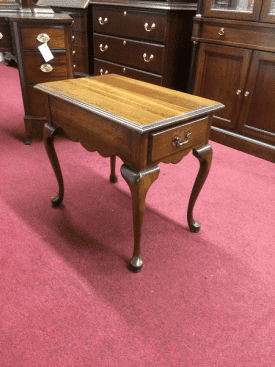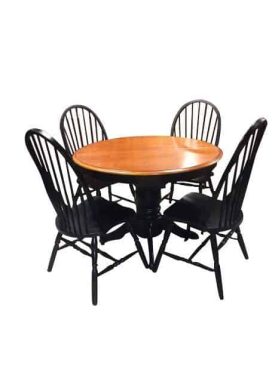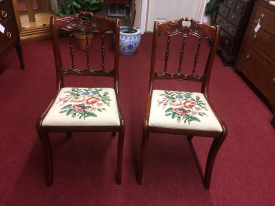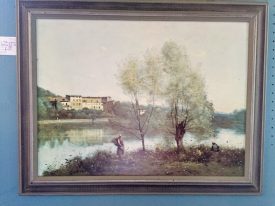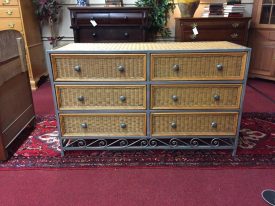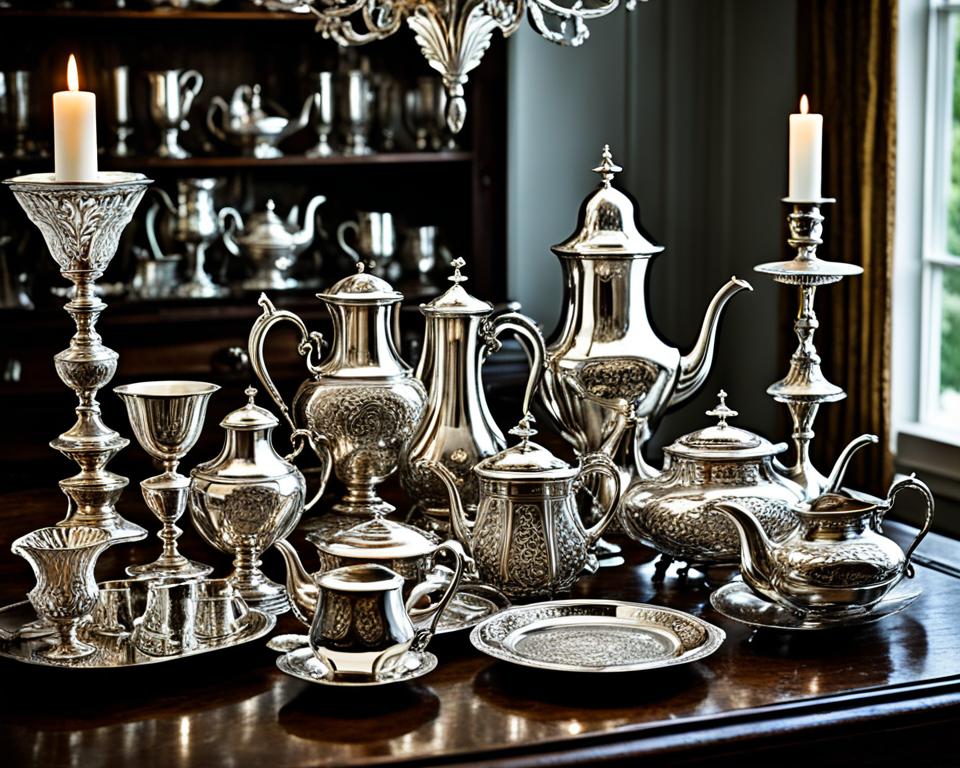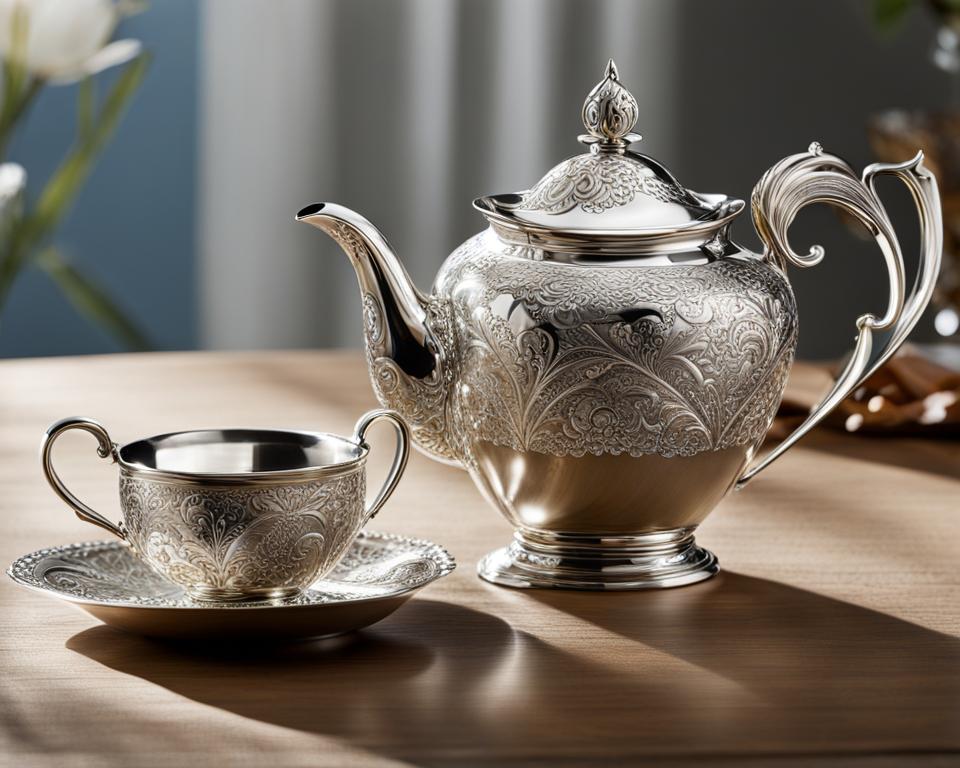I’ve always had a fondness for vintage furniture. The craftsmanship, the timeless beauty, and the stories these pieces carry make them truly special. I believe that restoring vintage furniture is a wonderful way to honor its history and revive its charm.
If you’re new to the world of furniture restoration, fear not! In this beginner’s guide, I’ll walk you through the process of how to restore vintage furniture step by step. By the end, you’ll have the knowledge and confidence to bring new life to your beloved vintage pieces.
Whether you have inherited a family heirloom or stumbled upon a hidden gem at a flea market, restoring vintage furniture can be a rewarding and creative endeavor. So let’s dive in and uncover the secrets of furniture restoration techniques together.
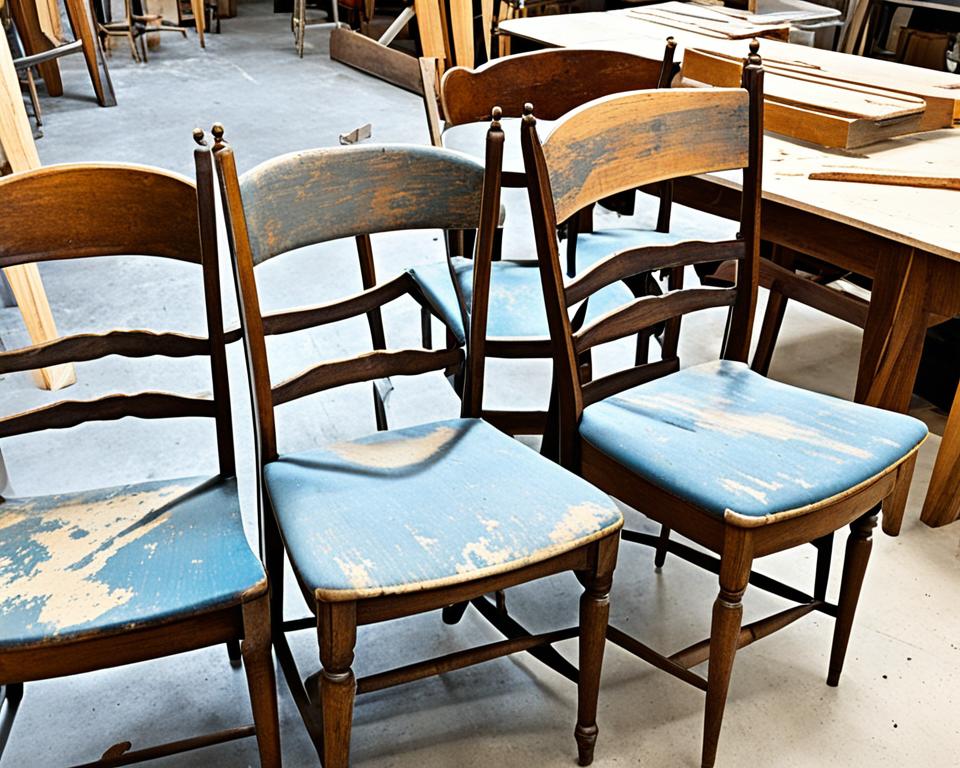
Key Takeaways:
- Restoring vintage furniture is a way to breathe new life into old pieces and honor their history.
- Even beginners can successfully restore vintage furniture with the right supplies and step-by-step instructions.
- Furniture restoration techniques involve stripping old paint, sanding, staining, and finishing.
- Testing for lead paint is crucial, especially for furniture made before 1978.
- Inspect for any broken parts and consider seeking professional help if needed.
Supplies Needed for Furniture Restoration
Before you embark on the journey of restoring vintage furniture, it’s essential to gather all the necessary supplies. Having the right tools and materials at hand will make the restoration process smoother and more efficient. Here are the key items you’ll need:
- Paint stripper: A reliable paint stripper, such as [Brand Name], is crucial for removing layers of old paint and varnish.
- Chemical-resistant gloves: Protect your hands and skin from harsh chemicals with a pair of chemical-resistant gloves.
- Chip brushes: These brushes are ideal for applying paint stripper and other solutions to the furniture’s surface.
- Plastic wrap: Cover the furniture with plastic wrap to prevent the paint stripper from drying out too quickly.
- Plastic scraper: Use a plastic scraper to gently remove the softened paint and varnish.
- Mineral spirits: These solvents are effective for cleaning residue and preparing the surface for refinishing.
- Scotch-Brite scrubbing pads: These abrasive pads are ideal for scrubbing away stubborn debris and old finish.
- Sandpaper or a power sander: Depending on your preference, use sandpaper or a power sander to smooth the furniture’s surface.
- Tack cloths: Use tack cloths to remove any dust or debris after sanding.
- Shop vac: A shop vac will help you efficiently clean up dust and debris during the restoration process.
- Stain or paint: Choose a high-quality stain or paint that suits your desired finish.
- Polyurethane or varnish: Finish the restored furniture with a protective layer of polyurethane or varnish to enhance its durability and beauty.
With these essential supplies in hand, you’ll be well-equipped to begin your vintage furniture restoration project. Remember to exercise caution and patience throughout the process, and enjoy the rewarding experience of breathing new life into cherished pieces from the past.
Testing for Lead Paint
When working on vintage furniture restoration, it is crucial to prioritize safety. Testing for lead paint is especially important, particularly if the piece was manufactured before 1978. To ensure accurate results, I recommend using a lead test kit and following the manufacturer’s instructions.
Lead test kit in action:
Lead paint was commonly used in furniture before its health risks became widely known. Ingesting or inhaling lead particles can lead to serious health issues, especially for children and pregnant women. By conducting a lead paint test, you can protect both yourself and those around you.
The testing process is straightforward. Simply follow the instructions provided with the lead test kit. Start by preparing the test area and the testing materials as outlined in the instructions. Then, use the testing swabs or strips included in the kit to collect samples from different parts of the furniture. Wait for the chemical reaction to occur, which will indicate the presence or absence of lead paint.
If the test comes back positive for lead, take extra precautions when continuing with the restoration process. This may include wearing a respirator mask, working in a well-ventilated area, and using containment measures to prevent the spread of lead dust.
Why Testing for Lead Paint Matters
Testing for lead paint is essential for several reasons:
- Health and Safety: Ensuring that the furniture does not contain lead paint is crucial for your health and the well-being of others.
- Environmental Impact: Proper handling of lead-based paint is necessary to protect the environment from contamination.
- Legal Requirements: In some areas, there are regulations and requirements for handling and disposing of lead-based paint.
By testing for lead paint, you can proceed with confidence in your restoration project, knowing that you are taking the necessary precautions for both yourself and the environment.
Paint Stripping
When it comes to restoring vintage furniture, paint stripping is an essential step in the process. By removing the old paint and stain, you can reveal the natural beauty of the wood and prepare it for refinishing. Here’s a step-by-step guide on how to effectively strip paint from your vintage furniture.
- Paint stripper (such as Citristrip)
- Chip brush
- Plastic wrap
- Plastic scraper
Now, let’s get started:
- Apply a thick layer of paint stripper to the furniture using a chip brush. Ensure that the entire surface is evenly covered.
- Cover the furniture with plastic wrap to prevent the stripper from drying out too quickly.
- Let the paint stripper sit for at least 30 minutes. This allows the chemicals to penetrate the layers of paint and loosen them.
- After the waiting period, test a small section of the furniture using a plastic scraper. Gently scrape away the paint to see if it easily comes off. If not, let the stripper sit for a bit longer.
- Once the old paint and stain start to lift, continue the stripping process. Apply more paint stripper as needed and repeat the waiting and testing process until all the old paint is removed.
Remember to wear gloves and work in a well-ventilated area while using paint stripper. It’s important to follow the manufacturer’s instructions and safety precautions for the specific product you’re using.
Once you’ve successfully stripped the furniture, you’re ready to move on to the next steps in the restoration process.
Removing Residue and Sanding
After stripping the paint, it’s crucial to remove any residue left behind on the vintage furniture. This step ensures a clean and smooth surface for refinishing. To remove the residue, I recommend using mineral spirits and scrubbing pads. These tools effectively eliminate stubborn remnants of paint and stripper.
When using mineral spirits, be sure to wear protective gloves and work in a well-ventilated area. Apply the mineral spirits to the furniture and use the scrubbing pads to gently scrub away the residue. Pay extra attention to small cracks and crevices where residue may accumulate.
| Supplies needed: | |
|---|---|
| Mineral spirits | |
| Scrubbing pads |
Sanding for a smooth finish
Once the residue has been removed, it’s time to sand the vintage furniture. Sanding helps to even out rough spots, imperfections, and any remaining old finish. Begin by using a coarse grit sandpaper to tackle the rough areas and gradually progress to a finer grit for a smooth finish.
When sanding, remember to work in the direction of the wood grain to achieve the best results. Take your time and be patient to avoid damaging the furniture. The goal is to create a surface that is smooth to the touch and ready for the next steps in the restoration process.
After sanding, use a tack cloth to remove any dust particles from the surface. This will ensure a clean and pristine base for the next stage of vintage furniture refinishing.
Now that we have cleaned off the residue and achieved a smooth surface, our vintage furniture is ready for the next phase: staining and finishing. This will help enhance its natural beauty and restore its original charm.
Staining and Finishing
When it comes to vintage furniture restoration, deciding whether to keep the natural wood look or apply a stain can greatly enhance the overall look and feel of the piece. Staining allows you to add color while still highlighting the beauty of the wood grain. Here are some tips for achieving the perfect stain and finish:
- Choose the Right Stain: Select a stain that complements the style and color palette of your space. Consider testing the stain on a small, inconspicuous area of the furniture to ensure it achieves your desired look.
- Apply the Stain: Use a clean rag to apply a light coat of stain to the furniture, working with the grain. Start in a less visible area to practice your technique and determine the desired depth of color. Allow the stain to penetrate the wood for the recommended time specified by the manufacturer.
- Remove Excess Stain: After the recommended time, wipe off any excess stain with a clean cloth. This step is crucial for achieving an even and consistent color. Be sure to wipe gently, following the direction of the grain, to avoid smudging or streaking.
- Allow for Proper Drying: Give the stain ample time to dry completely before moving on to the next step. This typically takes around 24 hours, but refer to the product instructions for accurate drying times.
- Protect with Polyurethane or Varnish: To provide durability and protection, apply a clear polyurethane or varnish as the finishing touch. This will help seal the wood and guard against wear and tear. Use a paint sprayer or brush to apply multiple thin coats, allowing sufficient drying time between each layer.
Remember, the key to achieving a flawless finish is patience and attention to detail. Take your time and ensure each step is executed carefully for a professional-looking result.
Top Stain and Finish Brands
| Brand | Product | Features |
|---|---|---|
| Minwax | Wood Finish Penetrating Stain | – Wide range of colors – Fast-drying formula – Enhances natural wood grain |
| Varathane | Fast Dry Wood Stain | – One-coat coverage – Fast drying time – Ideal for interior projects |
| General Finishes | Gel Stain | – Easy to apply – Non-drip formula – Suitable for vertical surfaces |
| Briwax | Original Wax | – Traditional wax finish – Available in various shades – Adds a rich luster to wood |
Repairing and Replacing Parts
When restoring antique furniture, it’s essential to carefully inspect the piece for any broken parts. Whether it’s a wobbly leg, a missing handle, or a cracked frame, addressing these issues will ensure the longevity and functionality of your restored treasure. While some repairs may require professional assistance, you can tackle minor fixes on your own with just a few simple techniques.
If you notice loose screws, simply tighten them with a screwdriver or a drill to restore stability. For small breaks or cracks, wood glue is an effective solution. Apply the glue to the affected area, join the broken pieces together, and secure them tightly until the glue dries. Once dry, use sandpaper to smooth out any excess glue for a seamless finish.
For cracks or gaps in the wood, stainable wood putty is an excellent choice. Fill in the damaged area with the putty, following the manufacturer’s instructions. After it dries, sand the area until it blends smoothly with the surrounding wood. This technique is particularly useful for hiding imperfections and maintaining the integrity of the furniture’s overall look.
If the damage is beyond repair or requires specialized knowledge, it’s advisable to seek professional assistance. Restoring antique furniture often requires delicate expertise to ensure the authenticity and value of the piece. A skilled professional can offer guidance and advice on preserving the historical significance and structural integrity of your beloved antique furniture.
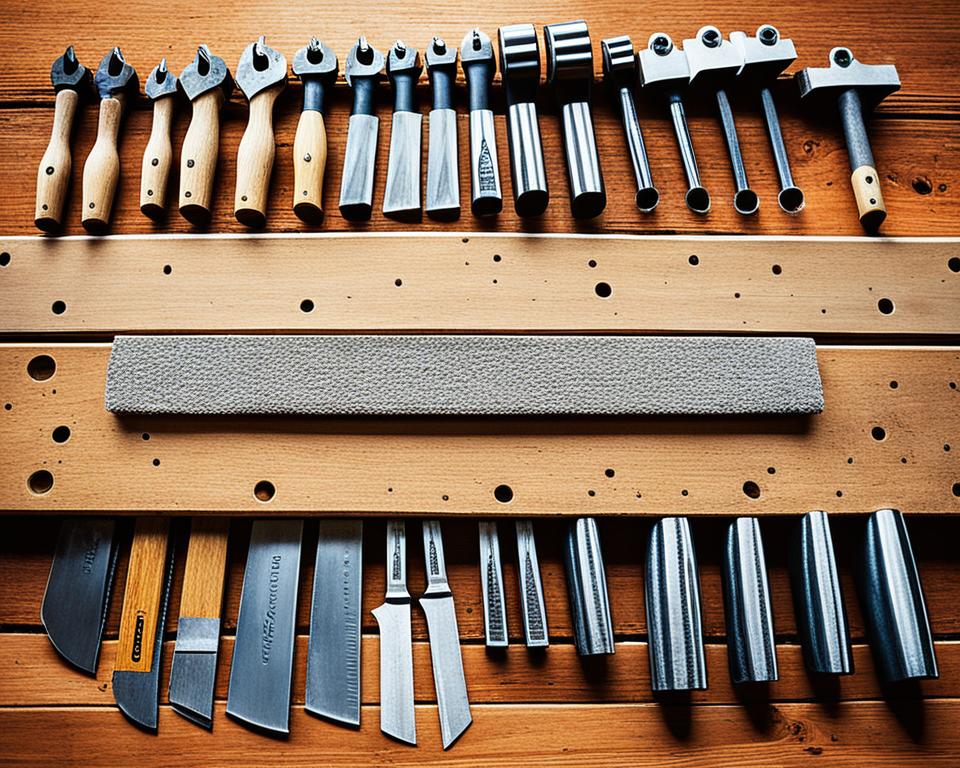
Remember, restoring antique furniture is an art that requires patience and attention to detail. By effectively repairing and replacing parts, you can revive the functionality and beauty of your cherished piece, ensuring it remains a valuable addition to your home for generations to come.
Cleaning and Maintenance
Once the restoration is complete, it’s essential to maintain and care for your vintage furniture properly. By following these cleaning and maintenance tips, you can preserve its beauty and ensure its longevity.
Regular Dusting
Regular dusting is crucial to prevent the buildup of dust and dirt on your vintage furniture. Use a soft cloth or a duster to gently remove dust from all surfaces, including hard-to-reach areas and intricate details. Dusting regularly helps maintain the furniture’s appearance and prevents scratches caused by abrasive particles.
Avoid Harsh Chemicals
When cleaning vintage furniture, it’s important to avoid using harsh chemicals that can damage the finish. Opt for mild, non-abrasive cleaners specifically designed for wood furniture. Always test any new cleaning product on a small, inconspicuous area before applying it to the entire piece.
Protective Measures
To keep your vintage furniture looking its best, consider implementing protective measures. For wooden surfaces, applying furniture wax or polish can help moisturize the wood and provide a protective barrier against moisture and stains. Be sure to follow the manufacturer’s instructions for application.
Dealing with Spills
In the event of a spill, it’s crucial to act quickly to prevent damage to your vintage furniture. Blot the spill immediately with a clean, soft cloth to absorb excess liquid. Avoid rubbing or scrubbing, as this can push the liquid deeper into the wood or cause surface damage. If necessary, consult a professional furniture restorer for guidance on removing stubborn stains.
Environmental Considerations
Environmental factors can impact the condition of your vintage furniture. Avoid placing it in direct sunlight, as prolonged exposure can fade and damage the wood finish. Additionally, maintain proper humidity levels in your home to prevent wood from drying out or warping. Use a humidifier or dehumidifier if necessary.
Regular Inspections
Periodically inspect your vintage furniture for signs of wear and tear. Check for loose joints, cracks, or any other structural issues that may require attention. Timely repairs can prevent further damage and ensure the longevity of your beloved pieces.
By following these cleaning and maintenance tips, you can enjoy the beauty and charm of your restored vintage furniture for years to come.
Conclusion
Restoring vintage furniture is an incredibly rewarding experience that allows you to bring new life to beloved pieces. By following the proper furniture restoration techniques and having the right supplies, even beginners can successfully undertake this DIY project. With patience, dedication, and attention to detail, you can transform old, worn-out furniture into beautiful, functional pieces for your home.
Throughout this guide, we have provided step-by-step instructions on how to restore vintage furniture. From testing for lead paint to paint stripping, removing residue, sanding, staining, and finishing, each stage is crucial in achieving a professional-looking result. Taking the time to repair and replace broken parts, as well as implementing regular cleaning and maintenance, will ensure the longevity of your restored furniture.
As you embark on your furniture restoration journey, remember to approach each project with care and creativity. Every vintage piece has a story to tell, and by restoring it, you become part of that narrative. So gather your supplies, set aside some time, and let your passion for restoring vintage furniture shine through in each project you undertake. Happy restoring!
FAQ
What supplies do I need for furniture restoration?
To restore vintage furniture, you will need paint stripper, chemical-resistant gloves, chip brushes, plastic wrap, plastic scraper, mineral spirits, Scotch-Brite scrubbing pads, sandpaper or a power sander, tack cloths, shop vac, stain or paint of your choice, and polyurethane or varnish for finishing.
How do I test for lead paint on vintage furniture?
Before restoring vintage furniture, it’s important to test for lead paint, especially if the piece was made before 1978. Use a lead test kit and follow the manufacturer’s instructions for accurate results.
How do I strip paint from vintage furniture?
Apply a paint stripper, such as Citristrip, to the furniture. Use a chip brush to apply a thick layer of stripper and cover the furniture with plastic wrap to prevent drying. Let the stripper sit for at least 30 minutes before testing a small section with a plastic scraper. Repeat the stripping process until all the old paint and stain is removed.
How do I remove residue and sand vintage furniture?
After stripping the paint, clean off any residue using mineral spirits and scrubbing pads. Pay attention to small cracks and crevices. Once the residue is removed, sand the furniture to smooth out rough spots and imperfections. Start with a coarse grit sandpaper and gradually move to a finer grit for a smooth finish.
How do I stain and finish restored vintage furniture?
Decide if you want to keep the natural wood look or apply a stain. If staining, apply a light coat of stain using a rag and wipe off any excess. Let the stain dry completely before applying a clear polyurethane or varnish. Use a paint sprayer or brush to apply multiple coats of the finish, allowing drying time between each layer.
How do I repair and replace broken parts on vintage furniture?
Inspect the furniture for any broken parts. Consider seeking professional help for tough repairs or structural issues. For minor repairs, tighten screws, join small breaks with wood glue, and fill in cracks with stainable wood putty. If necessary, replace broken parts with custom-made pieces.
How do I clean and maintain restored vintage furniture?
Once the restoration is complete, clean the furniture regularly to preserve its beauty. Use a soft cloth or duster to remove dust and avoid using harsh chemicals that can damage the finish. Apply furniture wax or polish to keep the wood moisturized and protected.

